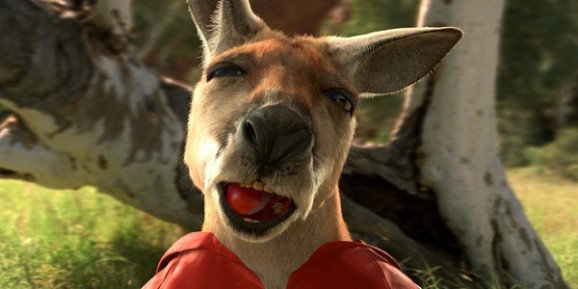A 17-Million-Year-Old Volcanic Eruption Gave Us Hot Pink Slugs And Cannibal Snails
This article is more than 2 years old

If you were to ask me why I grew up where I did, the answer wouldn’t be any more complicated than, “My parents moved there after my grandfather built the house.” This is but one of many different ways hot-pink slugs and I have nothing in common. I only turn hot pink when I take part in Peeps cosplay events.
What? You say you didn’t know hot-pink slugs existed? Most people don’t, including me as of 30 minutes ago. The DayGlo mollusks — technically called Triboniophorus aff. graeffei — grow to lengths of up to 20 centimeters and make their home in the regions around Australia’s Mouth Kaputar, which formed 17 million years ago after a volcanic explosion. It’s the only place on Earth with conditions that allow these creatures to exist.
“It’s a tiny island of alpine forest, hundreds of kilometres away from anything else like it,” said national parks ranger Michael Murphy. “The slugs, for example, are buried in the leaf mold during the day, but sometimes at night they come out in their hundreds and feed off the mold and moss on the trees. They are amazing, unreal-looking creatures.” (Hopefully they’re nonviolent.)
The rainforest area atop the mountain used to cover much of Australia’s surface, but when the lands dried up and the forests disappeared, this 100 sq km piece of mountaintop became the only place where these hot-pink slugs, and a host of other unique plants and invertebrates, can be found.

Another example is the Cannibal land snail, a carnivorous species that feeds upon its distant herbivore relatives. Pass the salt. No, wait, don’t pass the salt! “We’ve actually got three species of cannibal snail on Mount Kaputar, and they’re voracious little fellas,” Murphy explained. “They hunt around on the forest floor to pick up the slime trail of another snail, then hunt it down and gobble it up.”
It’s never too late to learn about rare animals, but it’s another thing to try and keep them from endangerment. The NSW Scientific Committee is in the preliminary stages of getting the area listed as an “endangered ecological community,” which would pretty much keep it sealed away from everyone but the wiliest of hot-pink slug enthusiasts. Keep away, humans.













